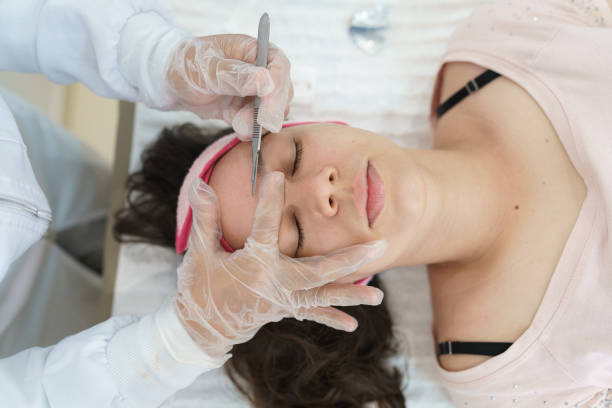What is Derma Planning?
Derma planning, also known as dermaplaning, is a cosmetic procedure that involves gently scraping the surface of the skin with a surgical scalpel. This process effectively removes dead skin cells, peach fuzz, and other impurities, leaving the skin soft and radiant.
How is Derma Planning Done?
During a derma planning session, a trained aesthetician holds the skin taut and uses light, feathering strokes to remove the top layer of the skin. This painless procedure results in a smoother complexion instantly.
Benefits of Derma Planning
Exfoliation and Smoother Skin: Derma planning exfoliates the skin, promoting cell turnover and revealing a fresher, younger-looking complexion.
Removal of Peach Fuzz: The procedure effectively removes peach fuzz, which can trap dirt and oil, leading to a dull complexion.
Improved Product Penetration: After derma planning, skincare products can penetrate the skin more effectively, enhancing their efficiency.
Brighter and More Radiant Skin: By removing the top layer of dead skin cells, derma planning uncovers the brighter, healthier skin beneath.
Safe and Painless Procedure: Derma planning is a safe and painless procedure when performed by a qualified professional.
Who Can Benefit from Derma Planning?
Derma planning is suitable for most skin types, except for those with active acne or inflamed skin conditions. It is particularly beneficial for individuals looking to improve skin texture and remove unwanted facial hair.
Derma Planning vs. Other Hair Removal Methods
Compared to methods like waxing and threading, derma planning offers a gentler approach to facial hair removal without the risk of irritation or ingrown hairs.
Myths and Facts about Derma Planning
Myth: Derma planning causes hair to grow back thicker and darker. Fact: Derma planning does not alter the texture or color of facial hair; it only removes the vellus hair on the skin’s surface.
Preparing for a Derma Planning Session
Before a derma planning session, it’s essential to cleanse the skin thoroughly. Avoid using any harsh skincare products in the days leading up to the appointment to prevent irritation.
What to Expect During and After Derma Planning
During the procedure, you might feel a slight tingling sensation, but it’s generally painless. After derma planning, your skin may appear slightly red, but this subsides within a few hours.
Aftercare and Maintenance
To maintain the results of derma planning, follow a good skincare routine and use sunscreen daily. Avoid exfoliating the skin for a few days after the procedure to allow it to heal properly.
Common Concerns and Side Effects
While derma planning is safe for most people, some individuals may experience minor redness or temporary sensitivity. These side effects usually resolve within a day or two.
Is Derma Planning Suitable for all Skin Types?
Yes, derma planning is suitable for most skin types, except for those with active acne or inflamed skin conditions.
How Often Should Derma Planning Be Done?
Derma planning can be done every 3 to 4 weeks, depending on your skin’s needs.
Is Derma Planning Painful?
No, derma planning is a painless procedure when performed by a trained professional.
Can Derma Planning Cause Skin Damage?
When performed by a qualified aesthetician, derma planning is safe and does not cause skin damage.
Are there any long-term effects of derma planning?
Derma planning promotes healthy skin and can be part of a regular skincare routine without adverse long-term effects.
Conclusion
Derma planning offers a range of benefits, from smoother skin to improved product penetration. It’s a safe and effective method for exfoliation and facial hair removal, suitable for various skin types. By understanding the procedure and following proper aftercare, individuals can enjoy the advantages of derma planning without concerns.
 5 6 1 . 8 1 0 . 0 5 5 5
5 6 1 . 8 1 0 . 0 5 5 5 








